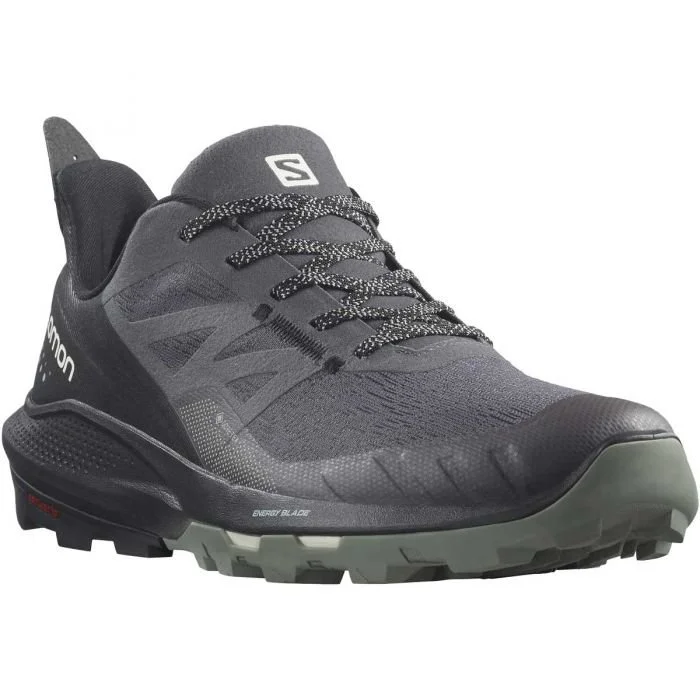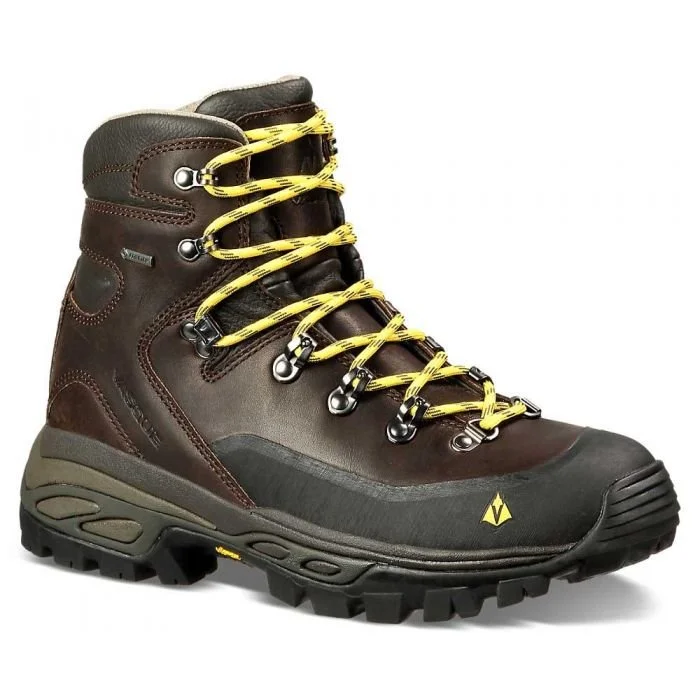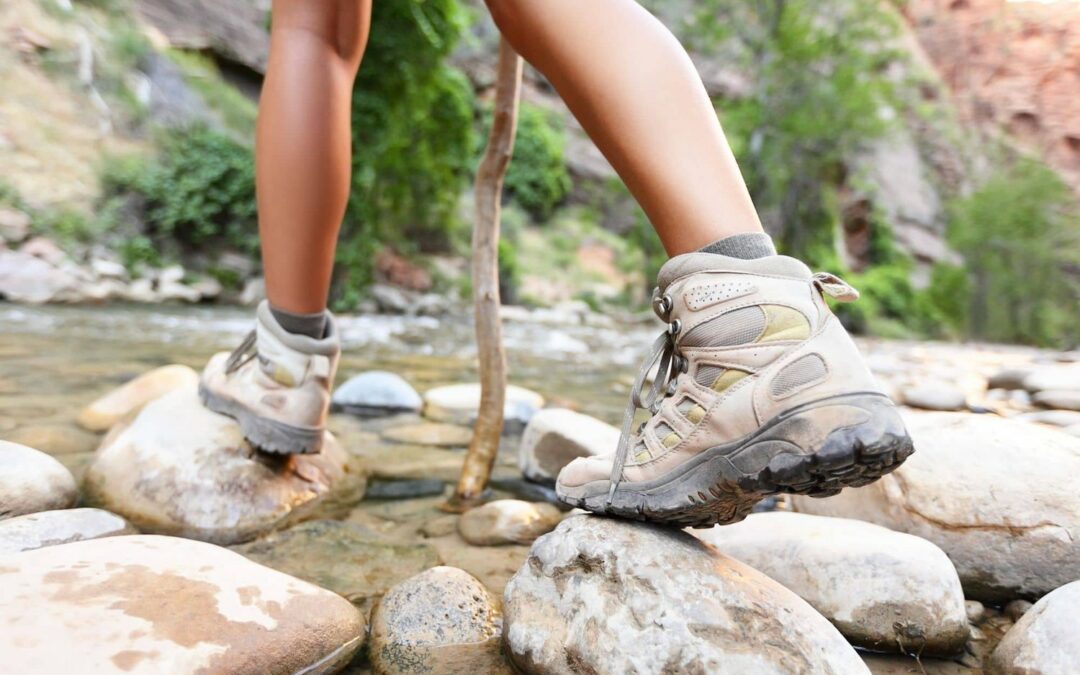Just before I head off on my next hiking adventure to the new Grampians trail (7-10 days hiking bliss!) I thought I would share my best tips for footwear! Many people have taken up hiking, trail running and bushwalking over the years as we get out in nature more after being stuck inside. So, this post will discuss hiking shoes/boots/runners – what are they and which ones should I get?
Trail and Hiking Runners
Trail or hiking runners are designed for long distance running over rough terrain – like running 60km around Wilson’s Prom or 20 km up and across Mt Feathertop. The outsole is more durable and stiff compared to a normal runner, but they are very light weight, and have mostly mesh upper. Our pick: SALOMON OUTPULSE GTX Men’s Shoe (bogong.com.au)

Hiking shoes are similar shape to your normal shoe (perhaps a bit more bulky and wide), slightly heavier with often an stiffer sole and a hardwearing base. Warning: make sure you check the base for stiffness – some hiking shoes on the market now have cheaper bases with limited support, but they look the same until you bend them (some are even the ‘right’ name brands). If the shoe bends in the middle or arch area at all put them back. They will not provide the support you need to walk longer distances and will not last. You can find waterproof hiking shoes on the market – just ensure adequate fit as our feet swell and heat up when walking and the upper will not stretch like your average shoes. You may need 1/2 size bigger than normal. Ladies, if you have an average to large width consider the men’s range – they look the same as ours, but they get a wider fit – much better for fitting if you need it. Our pick: ANATOM Q1 BALLATER Womens Ultralite Walking Shoe (bogong.com.au)

Hiking Boots
Hiking boots are designed for long distance walking, carrying a pack (10kg+) and multiday walking. These should have a very stiff sole and 15 deg pitch (meaning the heel is higher than the toe on a 15 deg angle). This helps to rock you forward when walking to reduce pressure on your first ray (big toe) and helps with stability when climbing over rocks. You’ll often notice a gap in the base around the midfoot – this is where gaiters sit if you wear them (good for snake and long grass protection). A good rule of thumb is these are required if going over 10km carrying over 10kg for more than a day. They are heavier than the shoes, but offer more stability and protection as well. If you can, borrow a pack in the store with some weight and walk around – you’ll notice how useful the support is for you. Laces can be tied up right to the ankles providing great fixation, however if you have a medical reason or are climbing in a mountainous area, do not use the top rungs for lacing or tie this area up tightly. It restricts the Achillies and often people find they get blisters around their ankles (not great if you are starting a big hike). Our pick: VASQUE ERIKSSON WIDE goretex hiking boots (bogong.com.au)

Not mentioned are specialized boots for alpine walking (think Himalayas) – this is very specialized gear and needs professional fitting as they are extremely tough in the base and upper to provide the protection you need. If you are going on one of those trips I’m sure your team will provide and fit gear or advise on what is needed – this will vary depending on where you are going and what time of year it is.
If you would like further information or are experiencing pain on your hikes come visit myself in clinic (Rebecca Mannix) so we can get you to your best! Happy walking! or Tramping if you are from New Zealand or roaming if in England 🙂

